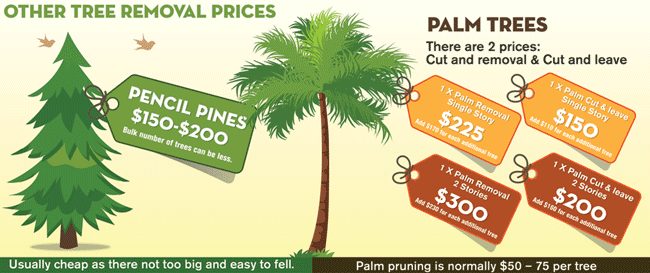Seasonal Tree Management: Techniques For Caring For Trees Prior To And After Their Elimination
Seasonal Tree Management: Techniques For Caring For Trees Prior To And After Their Elimination
Blog Article
Authored By-
When it pertains to seasonal tree treatment, ensuring proper management before and after removal can substantially impact the wellness and aesthetics of your landscape. By comprehending the necessary actions associated with assessing tree wellness and getting ready for removal, you can proactively safeguard your building. But what about the vital techniques to comply with once the tree is gone? Stay tuned to uncover the important post-removal care steps that will assist you cultivate a flourishing and lasting setting for your trees.
Pre-Removal Tree Treatment
Prior to dealing with the elimination of a tree, it's important to prioritize pre-removal tree treatment. Start by assessing the tree's health and wellness and structural integrity. Try to find indications of disease, insect infestations, or any architectural concerns that may present a security danger during elimination. It's vital to seek advice from a certified arborist to identify the most effective strategy.
Pruning dead or diseased branches can avoid additional damages to the tree and make sure a smoother removal process.
In addition, take into consideration the environmental influence of eliminating the tree. Trees play an important role in our environment, so planting a new tree in an appropriate area can help balance out any kind of loss. Make garden and grounds maintenance that you have the needed licenses and authorizations for tree removal, especially if the tree is safeguarded by neighborhood policies.
Seasonal Maintenance Tips
Evaluating your tree's needs throughout the year is crucial for its health and long life. To maintain your trees in leading problem, comply with these seasonal upkeep ideas.
In springtime, concentrate on pruning to remove dead or damaged branches and urge new development.
Summer season asks for regular watering, particularly during dry spells, to ensure your tree remains hydrated.
As loss approaches, keep an eye out for early indicators of condition or stress, and consider applying mulch to safeguard the roots during winter season.
In winter months, be cautious when getting rid of snow from branches to avoid damage, and continue to monitor your tree's overall health.
Remember to change your care routine based upon the particular demands of your tree varieties and neighborhood environment. By remaining attentive and positive throughout the seasons, you can assist your trees grow and grow for several years to find.
Post-Removal Tree Treatment
To make certain the health of your landscape also after tree removal, correct post-removal care is crucial. After a tree is eliminated, it's critical to load the continuing to be hole with topsoil and small it to stop settling. This will certainly help maintain the honesty of the ground and stop potential hazards in the future.
Consider growing new plant life in place of the gotten rid of tree to restore the equilibrium and visual appeals of your landscape. Frequently water the area to promote the growth of new plants and avoid soil erosion.
Check the surrounding trees for any indicators of condition or tension that may have been triggered by the eliminated tree. Watch out for what is landscape maintenance that might've been drawn in to the previous tree and take preventive measures to protect the remaining plants.
If required, seek advice from a professional arborist to examine the effect of the removal on the surrounding trees and figure out any extra care required. By adhering to these post-removal care steps, you can make certain the continued health and wellness and appeal of your landscape.
Final thought
Finally, proactive seasonal tree care is crucial for keeping the health and wellness and balance of your landscape. By examining tree health and wellness, pruning, and consulting with an arborist before elimination, you can make certain a secure process. After removal, filling the hole, planting new plants, and regular watering will advertise new development and protect against disintegration. Keep in mind to check surrounding trees for condition and look for additional care actions from an arborist to maintain your landscape flourishing.
